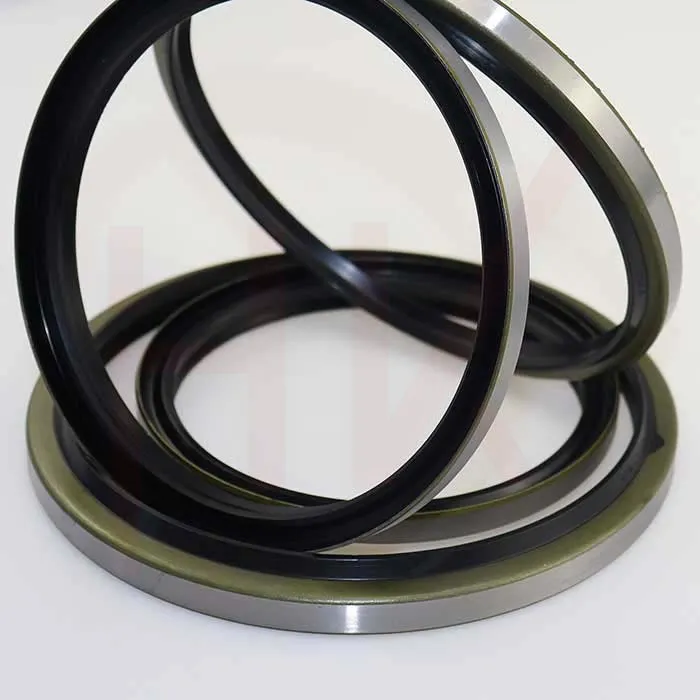Dis . 24, 2024 22:49 Back to list
dust wiper seal
Understanding Dust Wiper Seals Importance, Functionality, and Applications
Dust wiper seals are critical components in various machinery and systems, primarily designed to prevent the entry of dust, dirt, and other contaminants into important mechanical parts. These seals are often overlooked in discussions about machinery maintenance and operation, yet they play a vital role in ensuring the longevity and efficiency of equipment. This article explores the significance, functionality, and applications of dust wiper seals across different industries.
What are Dust Wiper Seals?
Dust wiper seals, sometimes referred to as dust seals or wiper seals, are specialized sealing devices typically located at the outermost points of hydraulic cylinders and pneumatic actuators. They are installed to prevent external contaminants from penetrating the inner mechanisms of machinery. Made from various materials including rubber, polyurethane, and metal, these seals are designed to withstand harsh operating conditions such as extreme temperatures, pressure fluctuations, and abrasive environments.
Importance of Dust Wiper Seals
The primary function of dust wiper seals is straightforward to keep contaminants out. However, the implications of their effectiveness are profound. Contaminated hydraulic systems can lead to increased wear and tear, reduced efficiency, and ultimately, mechanical failure. The presence of dust or other foreign particles can interfere with the functionality of moving parts, leading to a higher rate of maintenance and repair costs.
Moreover, in hydraulic cylinders, a failure to adequately seal against dust can result in contamination of hydraulic fluid. This contamination can compromise the fluid’s properties, leading to suboptimal performance and potential system failure. By employing dust wiper seals, operators can extend the life expectancy of their machinery, reduce downtime, and enhance overall performance.
How Dust Wiper Seals Work
Dust wiper seals operate on simple principles of elimination and prevention. They are typically the first line of defense against environmental pollutants, often featuring specific designs that enhance their efficiency. The seal is usually positioned externally, providing a barrier that actively wipes away any dust or debris when the machinery is in operation.
dust wiper seal

When the equipment moves, the dust wiper seal engages with the moving parts, effectively sweeping away any contaminants. This action prevents particles from entering the inner confines of the system, which is particularly crucial in maintaining lubrication and minimizing wear.
The design of these seals can vary based on specific applications. Some may incorporate rigid support rings or additional flanges to improve retention and positioning, while others might have varying lip configurations to accommodate different operational environments.
Applications of Dust Wiper Seals
Dust wiper seals find applications across numerous fields. In the construction and agricultural sectors, heavy machinery is frequently exposed to dust and debris. Equipment such as excavators, bulldozers, and tractors benefit significantly from the installation of robust dust wiper seals to enhance reliability and performance.
In the automotive industry, these seals are utilized in power steering systems and shock absorbers, where the prevention of particulate intrusion can drastically affect functionality and life span. Additionally, in manufacturing settings, machines that operate in dusty environments, such as woodworking or metal fabrication, rely heavily on dust wiper seals to maintain operational integrity.
In aerospace and aviation sectors, maintaining cleanliness around hydraulic systems is crucial. Dust wiper seals ensure that high-performance systems remain uncontaminated, thereby enhancing safety and reliability during flight operations.
Conclusion
In conclusion, dust wiper seals are indispensable components that contribute significantly to the performance and durability of various machines across different industries. Their ability to effectively block environmental contaminants ensures the optimal functioning of equipment, reducing maintenance costs and extending operational lifespan. As the demand for effective sealing solutions continues to grow in industrial applications, the role of dust wiper seals will remain critical in promoting machinery reliability and efficiency. Investing in high-quality dust wiper seals is a proactive approach to maintaining machinery and achieving long-term success.
-
TCN Oil Seal Metal Ring Reinforcement for Heavy Machinery
NewsJul.25,2025
-
Rotary Lip Seal Spring-Loaded Design for High-Speed Applications
NewsJul.25,2025
-
Hydraulic Cylinder Seals Polyurethane Material for High-Impact Jobs
NewsJul.25,2025
-
High Pressure Oil Seal Polyurethane Coating Wear Resistance
NewsJul.25,2025
-
Dust Proof Seal Double Lip Design for Construction Equipment
NewsJul.25,2025
-
Hub Seal Polyurethane Wear Resistance in Agricultural Vehicles
NewsJul.25,2025
-
The Trans-formative Journey of Wheel Hub Oil Seals
NewsJun.06,2025
Products categories
















